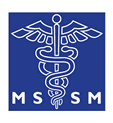The latest minimally invasive weight-loss procedure is called endoscopic sleeve gastroplasty. During the procedure, a physician inserts a suturing device through the throat and into the stomach. The endoscopist then places sutures in the patient’s stomach to reduce its size. Overweight patients with a body mass index of 30 or higher who haven’t experienced significant weight loss with diet and exercise may benefit from this procedure.
Endoscopic sleeve gastroplasty supports weight loss by limiting how much food patients can eat. Since the procedure is minimally invasive, there is a low risk of complications and virtually no recovery time.
To experience significant weight loss after endoscopic sleeve gastroplasty, patients must commit to living a healthy lifestyle that incorporates a good diet and regular exercise.
The Goals of The Procedure
Not only does endoscopic sleeve gastroplasty support weight loss, but it also lowers patients’ risk of serious weight-related health problems, including:
- Heart disease and stroke
- Sleep apnea
- High blood pressure
- Osteoarthritis (joint pain)
- Nonalcoholic fatty liver disease (NAFLD) or nonalcoholic steatohepatitis (NASH)
- Type 2 diabetes


Who Qualifies For Endoscopic Sleeve Gastroplasty?
The procedure is available to people:
- Whose body mass index (BMI) is greater than 30
- Who haven’t been able to maintain weight loss with lifestyle modifications alone
- Who don’t qualify for or wish to undergo traditional weight loss surgery
Every patient will need to undergo a screening process to ensure they’re a good candidate for endoscopic sleeve gastroplasty. Not every overweight patient qualifies for the procedure.
During the screening process, the physician will explain the need to commit to healthy lifestyle changes, attend regular medical follow-up appointments, and receive behavioral therapy.
The procedure isn’t recommended for patients with a large hiatal hernia or an illness associated with gastrointestinal bleeding, such as peptic ulcer disease or gastritis.
The Procedure
Endoscopic sleeve gastroplasty utilizes general anesthesia and is done on an outpatient basis.
The physician will use a flexible tube with a camera and an endoscopic suturing device attached to the tip. The endoscope will be inserted down the patient’s throat and into their stomach. The physician will see inside the patient’s stomach thanks to the tiny camera and place the sutures inside their stomach without making any abdominal incisions.
The sutures will alter the structure of the stomach, forming a tube-like shape. This will restrict the amount of food the patient will be able to eat after the procedure and they will feel fuller sooner.
Patients can expect the procedure to take about 60 to 90 minutes.

Potential Risks And Side Effects
The procedure has a high safety profile. For a few days after endoscopic sleeve gastroplasty, patients may experience pain and nausea. Medication may help manage these temporary side effects.
Though the procedure isn’t designed to be temporary, it can be converted to other forms of bariatric surgery. Patients should speak to their physician to learn more about their options.
If patients commit to a healthy lifestyle, they can expect to lose 15% to 20% of total body weight within 12 to 24 months after the procedure.







